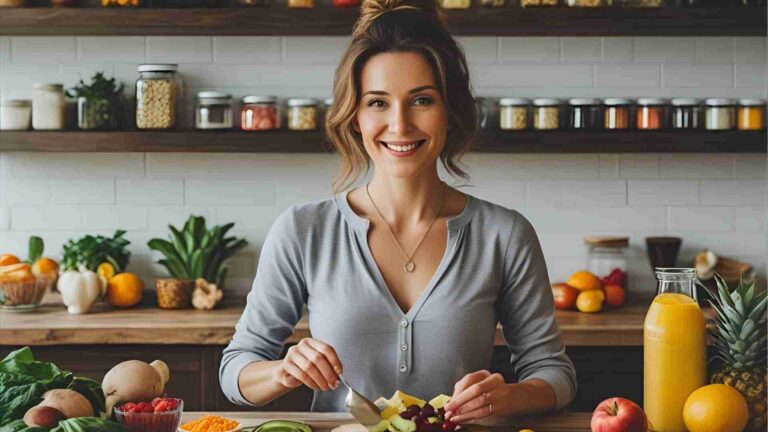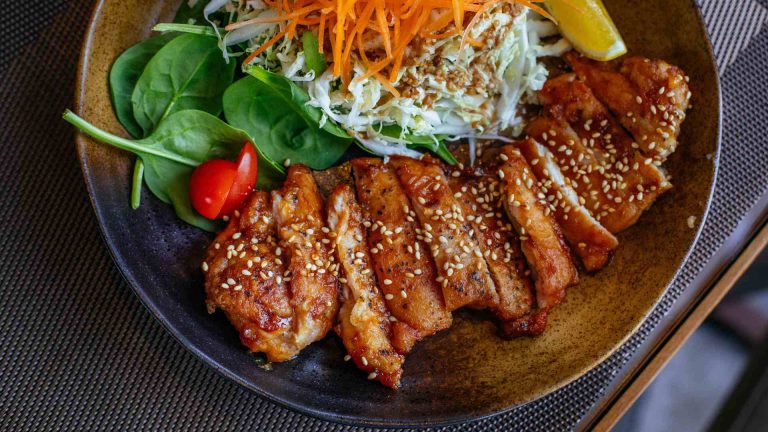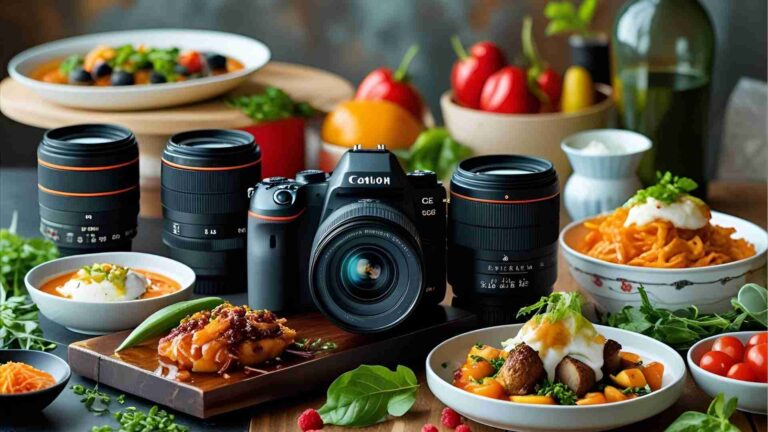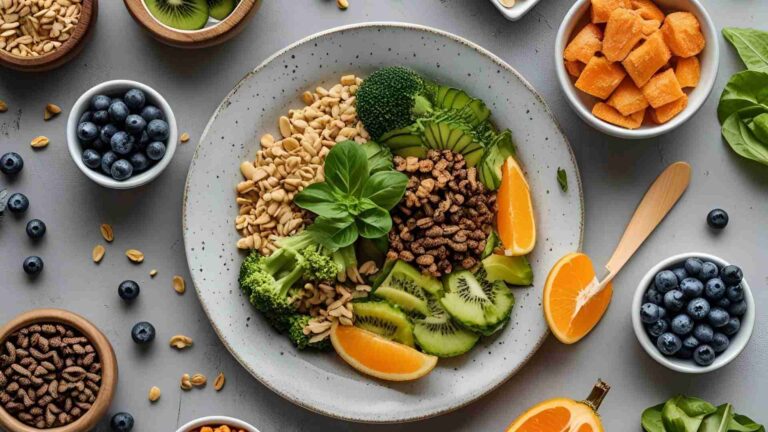How to Save Photos for Instagram and Other Social Media
Introduction
Saving photos for Instagram and other social media platforms involves more than just snapping a picture and uploading it. To ensure your images look sharp, load quickly, and perform well in algorithms, you must optimize file settings, dimensions, and attributes. This guide covers the best practices for exporting photos from tools like Lightroom and Photoshop, optimizing for platforms like Instagram, Facebook, Pinterest, and more, and downloading images safely. We’ll focus on technical details, including export specifications, to help photographers, bloggers, and marketers maintain image quality while boosting visibility.
Whether you’re a food photographer sharing recipes or a business promoting products, proper photo saving prevents pixelation, compression artifacts, and poor SEO performance. We’ll break down the two core stages: optimizing the photo file itself and enhancing its metadata for search engines. By following these steps, you can drive traffic to your site, improve engagement, and ensure your visuals shine across devices.
Key Stages in Optimizing Photos for Social Media
Optimizing photos for social media requires balancing image quality and file size. Export too large, and platforms compress them harshly; export too small, and they appear blurry. The process includes sharpening, compression, cropping, sizing, and color space selection.
Sharpening Photos for Optimal Display
Sharpening enhances detail but can create artifacts in smooth areas. Use selective sharpening with masking in Lightroom or Photoshop.
In Lightroom:
- Go to the Detail panel.
- Hold Alt (Windows) or Option (Mac) while adjusting the Masking slider.
- White areas receive sharpening; black areas remain untouched.
- Set Amount to 40-60, Radius to 1.0-1.5, Detail to 25-50.
In Photoshop:
- Duplicate the layer (Ctrl+J or Cmd+J).
- Apply Unsharp Mask (Filter > Sharpen > Unsharp Mask).
- Amount: 50-100%, Radius: 1-2 pixels, Threshold: 0-5.
This targets high-contrast areas like food textures or product edges, ensuring crispness after platform compression.
Compression Settings for Social Media
All platforms compress uploads, so start with high-quality exports and let algorithms handle the rest. Test file sizes under 1MB for best results.
Recommended Compression:
- JPEG Quality: 85-100% (Photoshop slider) or 80-100 (Lightroom).
- Avoid over-compression below 65% to prevent visible artifacts.
Table: Compression Impact on File Size
| Quality Level | File Size (1080×1080 Image) | Visible Artifacts |
|---|---|---|
| 100% | 500-800 KB | None |
| 85% | 200-400 KB | Minimal |
| 65% | 100-200 KB | Noticeable |
Use tools like TinyPNG for further optimization post-export.
Crop Ratios for Different Platforms
Crop ratios determine how images fill feeds. Instagram favors vertical formats for maximum visibility.
Instagram Crop Ratios:
- Vertical: 4:5 (1080×1350 pixels)
- Square: 1:1 (1080×1080 pixels)
- Horizontal: 1.91:1 (avoid for feeds; use square backgrounds)
Facebook: 1:1 or 4:5 for posts.
Pinterest: 2:3 vertical for Pins.
Chart: Photo Cropping Process

This flowchart outlines the decision-making for cropping based on platform.
Image Sizes and Resolutions
Platforms display images at specific resolutions. Export at native sizes to avoid resizing artifacts.
Instagram: 1080px width max.
Facebook: 2048px for high-res.
Pinterest: 1000x1500px for Pins.
Table: Recommended Image Sizes by Platform
| Platform | Landscape (px) | Vertical (px) | Square (px) | Max File Size |
|---|---|---|---|---|
| 1080×566 | 1080×1350 | 1080×1080 | 8MB | |
| 1080×566 | 1080×1359 | 1080×1080 | 8MB | |
| N/A | 1000×1500 | N/A | 20MB | |
| X (Twitter) | 1280×720 | 720×1280 | 720×720 | 5MB |
| 1200×627 | 720×900 | 1200×1200 | 5MB |
Resolutions: 72-240 DPI for web; higher for retina displays.
Color Space Selection
Use sRGB for digital displays to ensure consistent colors across devices. Adobe RGB or ProPhoto RGB suit print but cause shifts on social media.
In Lightroom/Photoshop:
- Export > File Settings > Color Space: sRGB.
This prevents dull or oversaturated images on mobile screens.
Export Settings in Lightroom and Photoshop
Exporting correctly is crucial for maintaining quality.
Exporting from Lightroom
Lightroom’s Export dialog streamlines settings for social media.
Steps:
- Select photos in Library module.
- File > Export.
- File Settings: JPEG, Quality 100, sRGB.
- Image Sizing: Resize to Fit > Short Edge > 1080px.
- Output Sharpening: Screen, Standard.
- Metadata: Copyright Only.
Platform-Specific Settings:
Instagram:
- Crop: 4:5 or 1:1
- Size: 1080px width
- Quality: 100
Facebook:
- Size: 2048px long edge
- Sharpening: Standard
Pinterest:
- Crop: 2:3
- Size: 1000x1500px
Table: Lightroom Export Presets
| Preset Name | Platform | Size (px) | Quality | Sharpening |
|---|---|---|---|---|
| 1080 short edge | 100 | Screen, Standard | ||
| 2048 long edge | 100 | Screen, High | ||
| 1000×1500 | 100 | Screen, Standard |
Save these as presets for efficiency.
Exporting from Photoshop
Photoshop offers preview for quality checks.
Steps:
- File > Export > Export As.
- Format: JPEG, Quality: 100, sRGB.
- Image Size: 1080px width.
- Sharpen: Bicubic Sharper.
For Instagram:
- Quality: Maximum
- Optimized: Checked
Chart: Photoshop Export Workflow

This visualizes the linear process.
Platform-Specific Optimization
Saving Photos for Instagram
Instagram compresses all uploads, so export at 1080px width.
Best Settings:
- Ratio: 4:5 vertical for max feed space.
- Size: 1080x1350px.
- Quality: 100.
Avoid horizontal; add square backgrounds if needed.
For Reels/Stories: 1080x1920px, 9:16 ratio.
Saving for Facebook
Facebook allows larger files.
Settings:
- Size: 2048px width.
- Ratio: 4:5 or 1:1.
- Sharpening: Standard.
For Events: 1920x1005px cover.
Saving for Pinterest
Pinterest favors tall images.
Settings:
- Ratio: 2:3.
- Size: 1000x1500px.
- Max Size: 32MB.
Saving for X (Twitter) and LinkedIn
X: 1280x720px landscape.
LinkedIn: 1200x627px for links.
Table: Cross-Platform Specs
| Platform | Recommended Ratio | Max Resolution (px) | File Type |
|---|---|---|---|
| X | 16:9 | 1280×720 | JPG/PNG |
| 1.91:1 | 1200×627 | JPG/PNG |
Optimizing Images for Websites and Blogs
Websites offer more flexibility than social media.
Key Tips:
- Max Width: Match theme (e.g., 640px).
- Retina: Double size (1280px for 640px display).
- Plugins: WP Retina 2x for high-DPI.
Loading Impact:
- 1-second delay reduces conversions by 7%.
- Compress to <100KB per image.
Table: Blog Image Specs
| Use Case | Size (px) | Quality | File Size |
|---|---|---|---|
| Full-Width | 1920 wide | 85 | <500KB |
| Thumbnail | 300×300 | 80 | <50KB |
Image SEO Optimization
SEO ensures images rank in searches.
File Names
Use descriptive names: “vegan-chocolate-cake.jpg”.
Include keywords and brand name.
Metadata Stripping
Strip all except copyright in Lightroom/Photoshop.
Alt Text
Add keywords: “Vegan chocolate cake recipe”.
Pinterest uses alt text for Pin descriptions.
Add alt text post-upload on Instagram via Advanced Settings > Accessibility.
Table: SEO Best Practices
| Element | Best Practice | Benefit |
|---|---|---|
| File Name | Keyword-rich, hyphenated | Search visibility |
| Alt Text | Descriptive with keywords | Accessibility & SEO |
| Metadata | Copyright only | Clean files |
Downloading and Saving Photos from Instagram
Saving Your Own Photos
Enable in Instagram Settings > Account > Original Photos > Save Original Photos.
For edited posts: Save Posted Photos.
Downloading Others’ Photos
Use tools like DownloadGram or ToolZu.
Steps:
- Copy photo link.
- Paste into tool.
- Download.
Legal Note: Respect copyrights; use for personal reference only.
Table: Download Tools Comparison
| Tool | Platform Support | Free? | Ads? |
|---|---|---|---|
| DownloadGram | All | Yes | Minimal |
| ToolZu | All | Yes | Yes |
| Insget | All | Yes | Minimal |
Chart: Download Process

Screenshot Method
For quick saves:
- Windows: Snipping Tool.
- Mac: Shift+Cmd+4.
- iPhone: Side+Volume Up.
- Android: Power+Volume Down.
Crop in editor.
Advanced Tools and Techniques
Using Third-Party Apps
Android: Video Downloader for Instagram.
iOS: Blaze Browser.
Batch Processing
In Lightroom: Export multiple with presets.
Photoshop: Actions for automation.
Pricing for Tools (If Applicable)
Lightroom: $9.99/month (Adobe Creative Cloud).
Photoshop: $20.99/month.
Canva Pro: $12.99/month for image editing.
WP Retina 2x: Free (WordPress plugin).
No direct prices for free downloaders.
Common Mistakes and Troubleshooting When Saving Photos for Social Media
When preparing photos for Instagram and other platforms, small errors can impact quality and performance. Below are three common mistakes—exporting in the wrong color space, ignoring crop ratios, and using large file sizes—with concise fixes to ensure sharp, efficient images.
Mistake 1: Exporting in the Wrong Color Space
Issue: Using Adobe RGB or ProPhoto RGB instead of sRGB causes color shifts, making images look dull or oversaturated on social media, as platforms expect sRGB for digital displays.
Impact: Colors appear inconsistent, reducing visual appeal (e.g., muted food photos or off-brand product colors).
Fix: Export in sRGB in Lightroom (File > Export > File Settings > sRGB) or Photoshop (Export As > Convert to sRGB). Preview on a mobile device to confirm colors match the original.
Tip: Edit on a calibrated monitor and maintain sRGB throughout your workflow.
Mistake 2: Ignoring Platform-Specific Crop Ratios
Issue: Uploading images without proper ratios (e.g., 4:5 for Instagram, 2:3 for Pinterest) leads to cropping or distortion, cutting off key elements or reducing visibility.
Impact: Images may appear awkwardly cropped or fail to fill the feed, lowering engagement.
Fix: Crop to platform-specific ratios before exporting: Instagram (4:5, 1080x1350px), Facebook (1:1 or 4:5), Pinterest (2:3, 1000x1500px). Test uploads on mobile and desktop to ensure proper display.
Tip: Use Lightroom’s Crop tool or Photoshop’s Canvas Size to set ratios early in editing.
Mistake 3: High File Sizes
Issue: Exporting large files (>1MB) slows down loading times, and platforms may over-compress them, causing pixelation or artifacts.
Impact: Slow uploads frustrate users, and heavy compression degrades quality, especially on mobile.
Fix: Export JPEGs at 85-100% quality, targeting <1MB. Use tools like TinyPNG for post-export compression. In Lightroom, set Image Sizing to 1080px for Instagram; in Photoshop, use Export As with optimized settings.
Tip: Check file size before uploading and aim for 200-400KB for optimal balance.
By addressing these mistakes—using sRGB, matching platform ratios, and compressing files—you’ll ensure your photos look sharp, load quickly, and engage audiences effectively across social media.
Table: Troubleshooting Guide
| Issue | Cause | Solution |
|---|---|---|
| Pixelation | Low resolution export | Export at 1080px+ |
| Color Shift | Wrong color space | Use sRGB |
| Slow Load | Large files | Compress quality 85% |
Frequently Asked Questions
For Instagram, export photos in Lightroom with these settings: JPEG format, Quality 100, Color Space sRGB, Resize to Fit Short Edge at 1080 pixels, and Output Sharpening set to Screen, Standard. Use a 4:5 vertical ratio (1080x1350px) for maximum feed visibility or 1:1 (1080x1080px) for square posts. These settings ensure sharp images with minimal compression artifacts.
To optimize file size, export images as JPEG with 85-100% quality in Lightroom or Photoshop, targeting under 1MB. Use sRGB color space and resize to platform-specific dimensions, like 1080px width for Instagram. Post-export, use tools like TinyPNG to further compress without noticeable quality loss. This balances fast loading with visual clarity.
Use these crop ratios: Instagram – 4:5 vertical (1080x1350px) or 1:1 square (1080x1080px); Facebook – 1:1 or 4:5; Pinterest – 2:3 vertical (1000x1500px); X – 16:9 landscape (1280x720px); LinkedIn – 1.91:1 (1200x627px). Crop in editing software to match these ratios for optimal display.
To download another user’s Instagram photo, use tools like DownloadGram or ToolZu. Copy the photo’s link from Instagram, paste it into the tool’s website, and download the image. Always respect copyright laws and use downloaded images for personal reference only, as unauthorized use may violate terms or rights.
Blurry photos often result from exporting at low resolution or incorrect dimensions. Ensure you export at 1080px width for Instagram, use JPEG Quality 100, and select sRGB color space. Avoid horizontal images (1.91:1) for feed posts, as they may be cropped or compressed poorly. Test uploads on a mobile device to confirm clarity.
Add descriptive, keyword-rich alt text to images for better searchability. On Instagram, go to Advanced Settings > Accessibility during posting and enter text like “Vegan chocolate cake recipe.” For Pinterest, include keywords in Pin descriptions. Use specific, relevant terms to improve accessibility and SEO performance across platforms.
In Lightroom, use the Detail panel: set Sharpening Amount to 40-60, Radius 1.0-1.5, Detail 25-50, and adjust Masking while holding Alt/Option to target edges. In Photoshop, duplicate the layer and apply Unsharp Mask (Amount 50-100%, Radius 1-2 pixels, Threshold 0-5). This enhances details without introducing artifacts, ideal for platform compression.
Conclusion
Mastering the art of saving and optimizing photos for Instagram and other social media platforms is essential for creating visually stunning, high-performing content. By using the right export settings in tools like Lightroom and Photoshop—such as JPEG Quality 100, sRGB color space, and platform-specific resolutions like 1080x1350px for Instagram—you ensure crisp, vibrant images that withstand compression. Proper crop ratios (e.g., 4:5 for Instagram, 2:3 for Pinterest) and SEO techniques, like keyword-rich file names and alt text, boost discoverability and engagement.
Avoiding common pitfalls, such as incorrect color spaces or oversized files, preserves quality and load speed. Whether you’re a photographer, blogger, or marketer, these strategies enhance your brand’s visual impact and drive traffic.
Implementing these practices, from sharpening techniques to safe downloading methods, empowers you to create professional-grade posts that captivate audiences across platforms, ensuring your content stands out in crowded digital spaces.
Please share this How to Save Photos for Instagram and Other Social Media with your friends and do a comment below about your feedback.
We will meet you on next article.
Until you can read, How to use the Rule of Odds to improve your Food Photography






